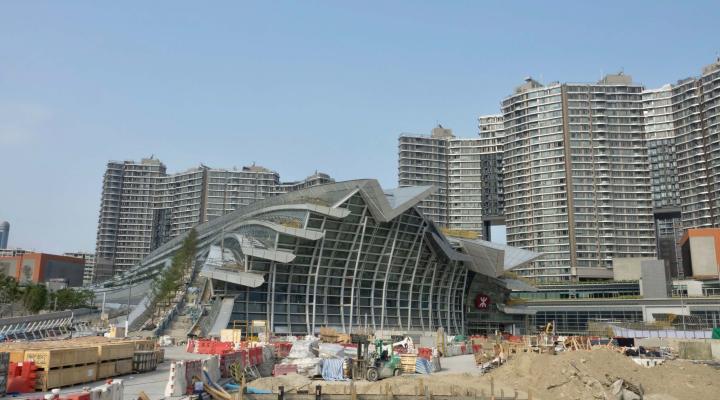As far as I could judge, we were on the same side of things.
My research on megaprojects began in earnest when I received a large research grant from the Danish Transport Council to develop my first research group on megaprojects, at Aalborg University, Denmark. When the grant was announced, something really interesting happened, something I had never experienced before.
I received an invitation from Copenhagen to have lunch with a high-ranking government official in infrastructure planning in Denmark. I had met this official several times at professional meetings and liked him, so I gladly accepted. As far as I could judge, we were on the same side of things in working for an improved version of the welfare state – a favourite pastime in Scandinavia – including better and more democratic policy and management for cities, infrastructure, and the environment.
He took me to a nice restaurant on the canal close to his ministry, where we had lunch and pleasant conversation, until towards the end of the meal, when he congratulated me on my new research grant and told me in no uncertain terms that if I came up with results that reflected badly on his government and ministry he would personally make sure my research funds dried up.
Blowing the whistle repeatedly on the management of the largest and most prestigious project in Danish history may have miffed people in high places.
I froze. I could not believe what I heard. Was I in Denmark or some banana republic, or were the two the same? And why the threat?
I figured it must be because I had publicly criticized the leadership at the Danish Great Belt megaproject for misinforming Parliament and the public about cost overruns on the project. Management said costs had overrun by 29 per cent in total for the project's tunnel and two bridges (including the world's longest suspension bridge at the time and the second-longest underwater rail tunnel in Europe). My research showed the overrun to be 55 per cent, a difference of several billion kroner. Every time Great Belt management publicly mentioned their 29 per cent figure, I would just as publicly point out that the real overrun was 55 per cent.
This happened over and over until Great Belt management did an opinion poll asking the public which of the two figures they thought was right. The public said 55 per cent, and this made management give up on postulating their 29 per cent and acknowledge my 55 per cent, a figure later verified by the National Audit Office of Denmark. For a scholar, a poll seems a strange way to decide the validity of data, but it taught me the lesson that it is possible to inject research results into and influence the often highly manipulated public discourse on megaprojects.
He congratulated me on my new research grant and told me in no uncertain terms that if I came up with results that reflected badly on his government and ministry he would personally make sure my research funds dried up.
Now it also taught me that blowing the whistle repeatedly on the management of the largest and most prestigious project in Danish history may have miffed people in high places.
Then a rush of blood and excitement shot through my body. My colleagues and I had hit pay dirt even before properly beginning the research! If the Danish government found it worth their while to send their Chief Planner to threaten me over a piece of research, this was the best demonstration that the research must be done and was likely to produce interesting results. So that is what I told the official before I got up and left, incredulous but happy about this backward endorsement of the work my colleagues and I were just starting.
The Chief Planner inadvertently alerted us to the type of power relation we call a ‘tension point’ and which the French historian of ideas Michel Foucault calls ‘virtual fractures’.* These are ‘lines of fragility in the present ... which open up the space of freedom understood as a space of concrete freedom, that is, of possible transformation’. This type of power relation is particularly susceptible to problematization and thus to change, because it is fraught with dubious practices, contestable knowledge, and potential conflict, like most megaprojects are. Thus, even a small challenge – like problematization by scholars – may tip the scales and trigger change in a tension point.
If the Danish government found it worth their while to send their Chief Planner to threaten me over a piece of research, this was the best demonstration that the research must be done and was likely to produce interesting results.
Problematizing tension points may be compared with hitting a rock with a hammer. If you hit the rock at random it seems unbreakable, even if you hit it hard. If you hit the rock more strategically at the small, near-invisible fault lines that most rocks have, the rock will fracture, even if you hit it gently. Tension points are the fault lines that we, as researchers interested in change, seek out; this is where we problematize existing practices to make them come apart and create space for new and better ones. Tension points have the added advantage that with their focus on power and dubious practices they tend to make good stories and thus to be of interest to media and the public.
Here it is enough to say that the Chief Planner made us aware of the acute tension between the image that he and the government wanted to project for megaproject management and the reality of such management. This tension point proved to be an important lead for our research and got us off to an effective start in problematizing and changing megaproject policy and management. In this sense we cannot thank the Chief Planner enough for pointing us in the right direction so early in our research.




